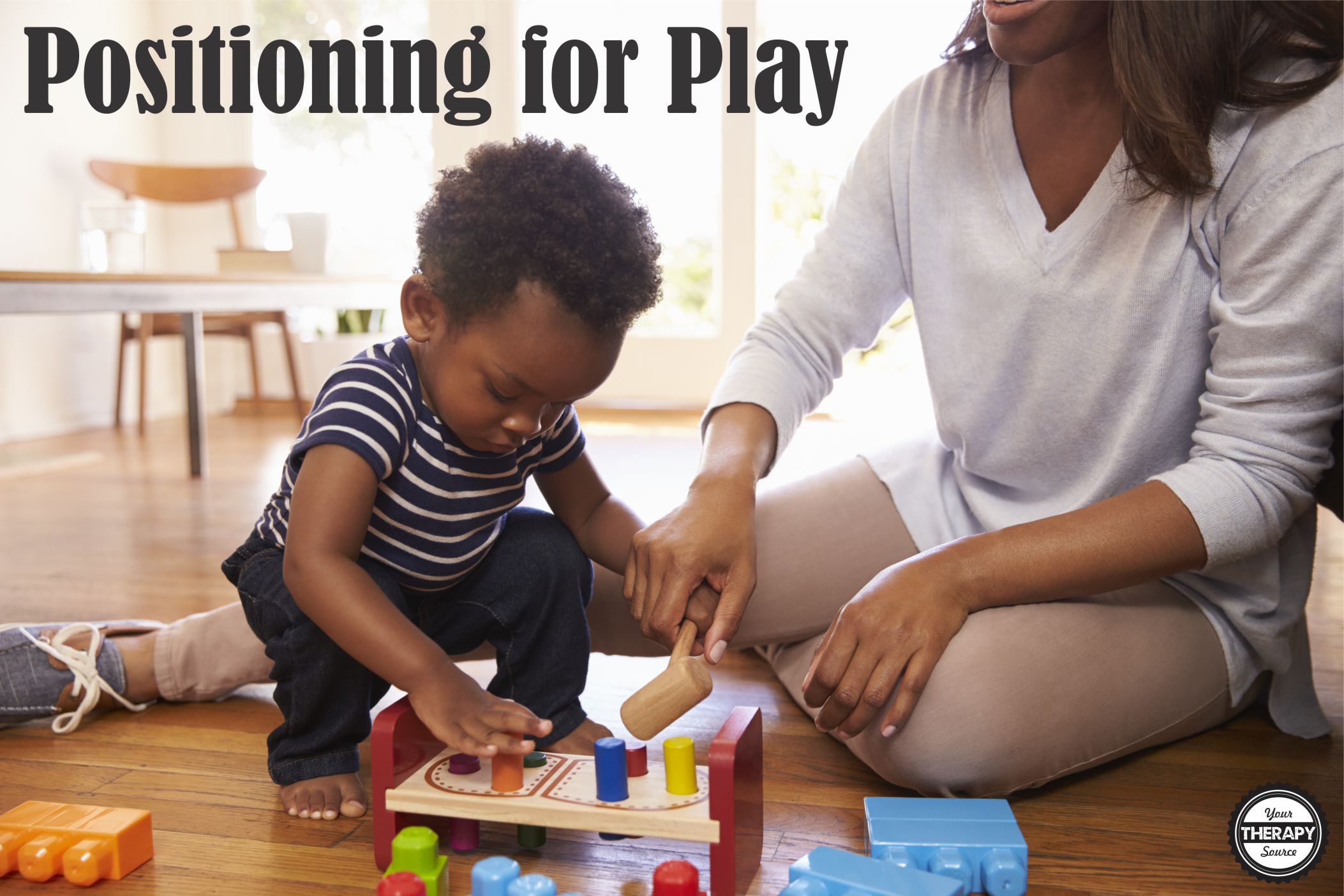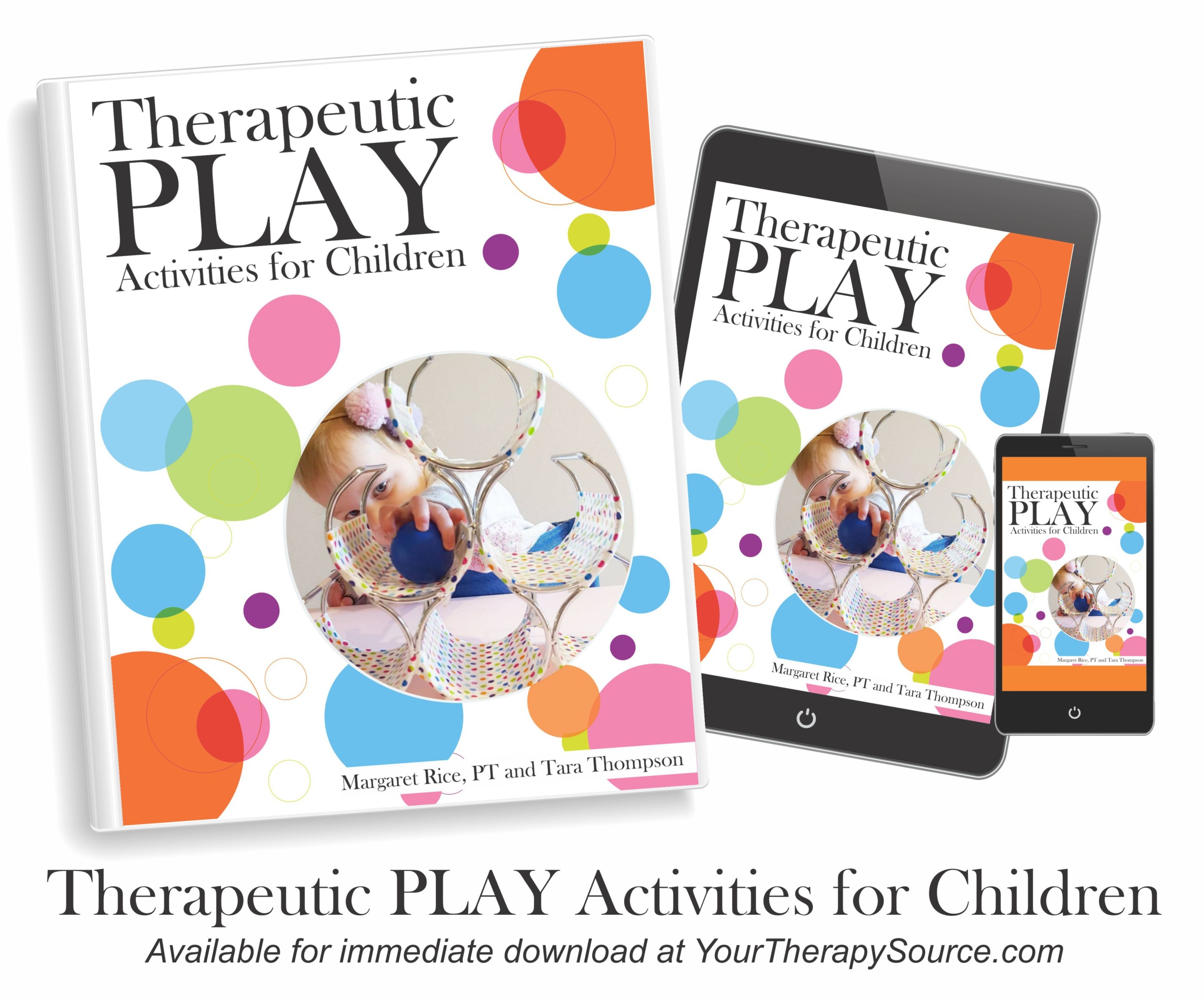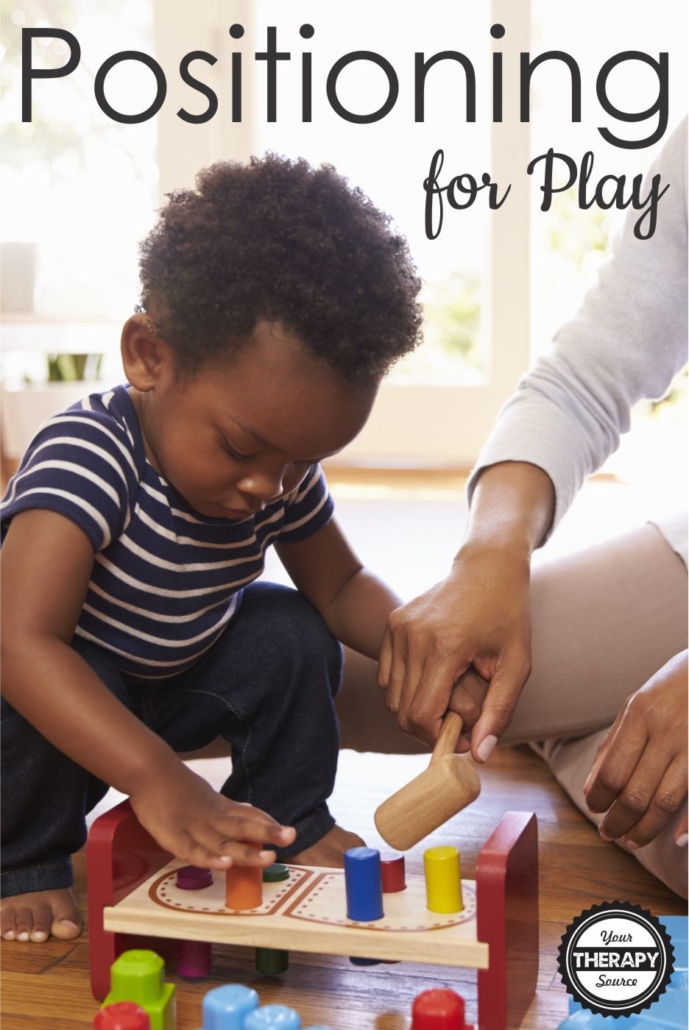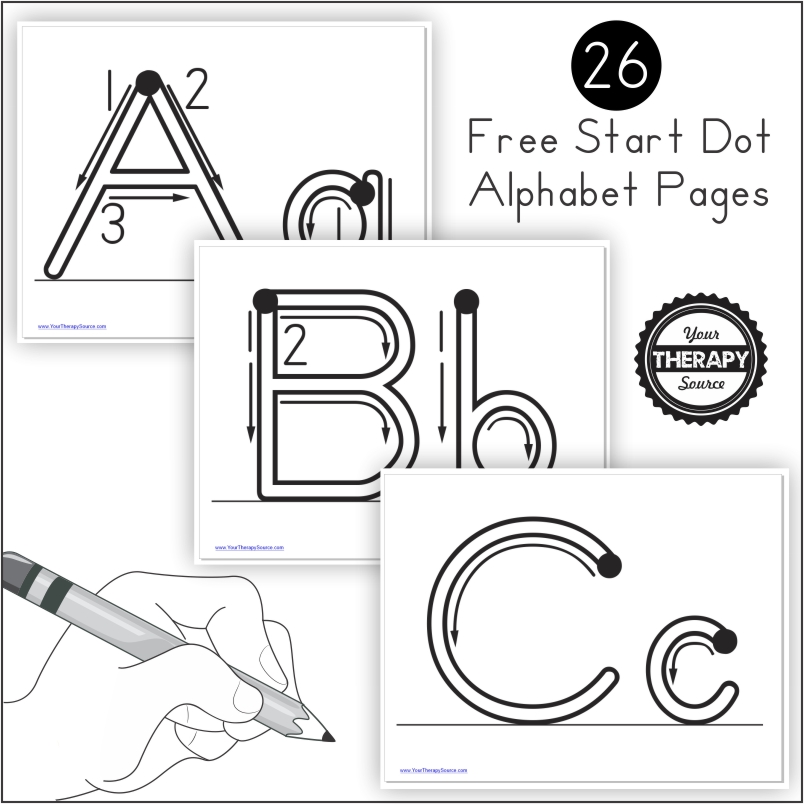Positioning for Play

During physical play time, children tend to move through various positions and during sedentary play time children tend to maintain the same position for a longer period of time. For example, when playing hide and go seek children move in all different ways such as sitting, crawling, squatting, walking or running. In contrast, when completing a puzzle, using blocks or playing a tabletop game, children may stay in one position for a longer period of time. It is beneficial to be aware of ideal positioning during play. In general, it is helpful to change positions every 20-30 minutes to prevent asymmetries in muscles and bad habits. Most of the time during play, children will move in and out of positions frequently which is wonderful.
Tips for Positioning for Play
When children are in one position for a longer period of time, there are some general guidelines based on the position of the child.
Child is lying on back to play
head in midline and comfortable
back is straight
legs are uncrossed or child is actively moving legs
shoulders are forward encouraging hands to come to midline for play
Child is on belly (prone positioning for play)
body is straight with head in midline
hips and knees are straight
shoulders are slightly forward or directly underneath
use small pillow under chest if necessary for support
hands are open if possible
Child is sitting on the floor
use cross legged position, long sitting (legs out front) or side sitting (switching sides)
avoid w-sitting (legs turned inwards, knees touching and lower legs out to sides)
sit with back support if needed to free up the hands for play
Child is sitting in a chair at a table
the feet should have a stable base of support
hips, knees and ankles should be bent at 90 degrees
table should be 1-2” higher than bent elbows
Child is standing
hips and knees are straight (knees are not locked)
feet are on the ground, slightly apart with toes pointing forward or slightly outward
frequently check to make sure the child has heel contact on the floor

Therapeutic Play Activities for Children – Do you work with young children with cerebral palsy, autism spectrum disorders, developmental disabilities or delays? Are you in search of new, creative ideas for your therapy sessions? Do you need home exercise program sheets to encourage carry over of therapeutic activities? Do you need simple ideas that use materials that you have around your house, therapy room or classroom already? Do you work with children who receive constraint or bimanual therapy? Therapeutic Play Activities for Children includes 100 play activity sheets with a photo of the activity, purpose of each activity and materials list. The 12 tip sheets include topics such as modifications, peer interaction, guided play, prompts and several specifically for children with cerebral palsy. FIND OUT MORE INFORMATION.
Download your FREE printable
Enter your email to download the printable, one page hand out with all the information on positioning for play and sign up to receive information on research, freebies and new products. The hand out provides suggestions for positioning during play in supine (back), prone (belly), sitting and standing.



